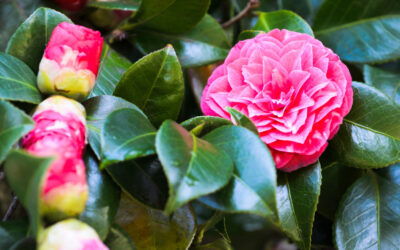Homeowners, gardeners, and landscapers often begin “clean up” in their landscapes during fall. Not all plants are similar in what should or should not be cut back, as well as what season the plant prefers to be pruned. Though fall seems to be the most common time you hear of people cutting back and pruning their shrubs and plants, it’s common for plants to be pruned too early during this season. Knowing when and what to prune can be tricky, causing many homeowners to avoid pruning altogether.Pruning your plants is an important cultural practice that has numerous benefits. Learning the optimal time and technique to prune will increase the overall health and performance of your plants.
Shrubs and Woody Perennials
Few plants prefer fall pruning over an early spring pruning. A common shrub that can be significantly affected by pruning is hydrangeas. Certain varieties respond best to a late summer pruning. Shade hydrangeas fall into this category and bloom from older growth. These varieties produce the most flowers the following year when pruned immediately after blooming is finished or when the leaves begin to fall off. Panicle hydrangea varieties, like Limelight, will bloom from new growth. Ideally, a heavy cut back in late winter or early spring will produce the most blooms on these varieties. The graphic below can help you better understand the pruning requirements of hydrangeas.
Roses can be particular in their growing conditions, and the same can be said for their pruning requirements. An early spring pruning is best for roses to encourage fresh growth and control size. When pruning a rose, be sure to remove any dead growth to avoid disease or insect issues. Any diseased or dead growth will be visibly discolored from the live growth. Roses enjoy airflow through the shrub, so pruning any crowded branches is a common practice when cutting back roses. Roses can handle being cut down to one half of its size, allowing new growth to flush out and encourage blooms.
Grasses and Tender Perennials
Ornamental grasses can be cut back as early as the first frost or as late as mid-spring. Ornamental grasses, when left uncut through the fall and winter, add interest to your landscape and provide shelter for songbirds and other native wildlife through the winter season. Since ornamental grasses have a large window for pruning, homeowners and gardeners should decide the best time to prune based on their landscape.
In regard to smaller, tender perennials, most can be pruned almost completely to the ground. Full sun perennials will prefer to be left untouched until the foliage has begun to brown and die back in late fall or early winter, at which point the dead growth can be removed to encourage fresh spring growth. Shade perennials can be cut back after the first frost, after the foliage has begun to brown and die back. Applying a fresh layer of mulch is a common practice in overwintering perennials. This will protect the crown and root system from any uncharacteristically cold winter nights, but is not always necessary.
Though pruning is not always necessary year-after-year, it is best to examine your landscapes once a year to determine what would benefit from being cut back. Pruning is an important management practice when tending to your plants, so knowing when and what is best will improve your landscapes overall beauty and growth. For more tips and help with pruning, contact Martin’s Home & Garden to speak with one of our many knowledgeable plant experts, or check out this additional resource from the University of Tennessee to learn more.


